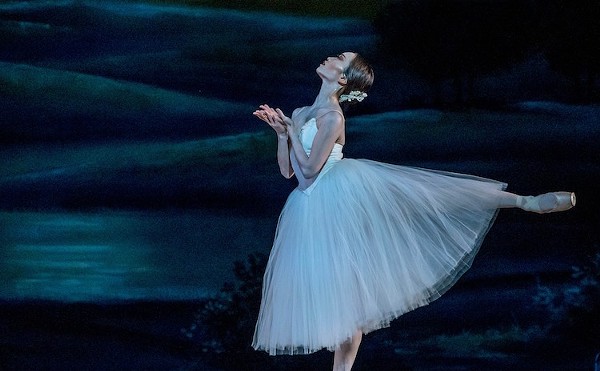I grew up on a strict diet of pop culture, so my knowledge of the Tudors is limited to the Monty Python sketch “The Death of Mary, Queen of Scots,” Rick Wakeman’s solo album, The Six Wives of Henry VIII, and the Herman’s Hermits song “I’m Henry the VIII, I Am.” In other words, I know as much about the Tudors as George W. Bush does about the price of gasoline.
But as a member of the media who’s paid to spot trends (or write about them when an editor asks), I can confidently report that there seems to be a boomlet in interest about the Tudor dynasty, which ruled England from 1485 to 1603, according to a helpful website targeted for ages 7 to 10 (www.brims.co.uk/tudors) and probably my high-school history teachers, although I’m sure I wasn’t listening.
Showtime’s dramatic series The Tudors returns for a second season March 30, and in its second week, the movie The Other Boleyn Girl generated $14 million before the numbers started to drop. With Cate Blanchett’s portrayal of Queen Elizabeth I last year in Elizabeth: The Golden Age and Scarlett Johansson set to star as Mary Stuart in Mary Queen of Scots (to be released this fall), what we have here is a trend.
But it really isn’t new. The ruling family has been a public fascination for centuries. Tudorhistory.org lists 55 movies/miniseries about the House of Tudor, beginning with the 1895 one-minute-long film The Execution of Mary Stuart, directed by Thomas Edison, one of the first movies ever made. Laurence Olivier (as Richard III), Bette Davis (as Elizabeth I) and Katharine Hepburn (as Mary, Queen of Scots) are but a few of the legendary actors who’ve played a role in a retelling of the Tudor stories.
Not a decade goes by that someone doesn’t dredge up the Tudor legend for fun and profit. Why? For the answer, I turned to Robert Bucholz, professor of history at Loyola University of Chicago, whose books include Early-Modern England 1485-1714: A Narrative History, co-authored by Newton Key (Wiley-Blackwell).
“I think the Tudors are always in fashion because it is easy – if wrong – to boil down this story into one of raw sex and power,” he wrote via e-mail. “And who doesn’t find that interesting? In fact, the real Tudor story is far more complex AND interesting – involving the haunting memory of the Wars of the Roses, Reformation Era theology, foreign policy, even the price of bread – in ways that actually affected real people’s lives.
“Instead, those responsible for these films have turned the Tudor tale into a Harlequin Romance or Desperate Palace Wives. That’s fun and possibly entertaining – I especially like seeing the costumes – but not to be taken seriously.”
Bucholz isn’t the only one who calls the production a case of “bad history.” A viewer posted a lengthy critique on The Tudors at www.imdb.com, taking on the casting as well as the historical accuracy or lack thereof. Another poster left a pithy comment under a San Francisco Chronicle review of The Tudors that read, “C’mon. Only if Henry VIII lived on Melrose Place.”
Season Two of The Tudors begins in 1532, when Henry VIII (a dashing Jonathan Rhys Meyers) contentiously declares himself the head of the Church of England – “but only as far as the law of Christ allows.” The heretical maneuver allows the young king to divorce his legal wife and queen, the devout Katherine of Aragon (Maria Doyle Kennedy, who does a terrific job playing the spurned spouse) and marry his bewitching mistress, Anne Boleyn (Natalie Dormer), all in violation of the Vatican. Not that Henry cares.
In keeping with the show’s sexed-up reputation, there’s some nookie (the women don’t just lie back and think of England) in the season opener, but only a touch of nudity. The violence is stepped up, though, when King Henry opens up a big can of Tony Soprano–like whup-ass on the messenger who delivers the soon-to-be-ousted queen’s demands. And, for good measure, another poor soul is boiled alive as punishment for trying to poison members of the church hierarchy.
Bucholz suggests the real problem with paying so much attention to the Tudors is that we ignore their royal successors, the Stuarts, who tried to rule England absolutely. That family’s political and cultural battles – the right of habeas corpus, the right against unreasonable search and seizure, parliamentary power of the purse, the religion of the ruler and, above all, whether said ruler is above the law – mirror struggles in U.S. history. In fact, he says, “I would argue that presidential signing statements are merely the Stuart claim to be able to dispense with the law in individual cases.”
“These are all debates that Englishmen and women argued, fought and settled under the Stuarts, culminating in the Glorious Revolution of 1688-89 and the English Bill of Rights, the foundation of our Bill of Rights,” Bucholz says. “But nobody seems to want to make a movie about that.”
[email protected]














